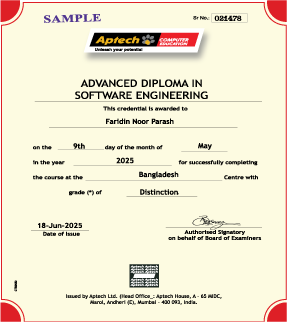Smart Professional Course
Smart Professional-User Interface and Experience Design (TERM 1+2+3) OV-7077

270+
Instructional Hours
Why Choose This AI & ML Course?
Course Overview
Our comprehensive course curriculum covers everything from fundamentals to advanced techniques, preparing you for a successful career.
270
Instructional Hours
0
Comprehensive Modules
0
Lab Hours
0
Capstone Project
| Module | Duration (Hours) | Theory | Lab | Self-Study | Tools/Software |
|---|---|---|---|---|---|
| TERM 1 : UX Design Overview | 10 | 10 | - | 3 | |
|
|
|||||
| Basics of Usability | 8 | 8 | - | 2 | |
|
|
|||||
| UXD Process and Workflow | 8 | 8 | - | 2 | |
|
|
|||||
| UX Research Phase | 16 | 16 | - | 4 | |
|
|
|||||
| UX Design Phase | 16 | 8 | 8 | 4 | |
|
|
|||||
| Validation and Implementation Phase | 14 | 10 | 4 | 4 | |
|
|
|||||
| UX Design Portfolio-1 | 18 | 2 | 16 | - | |
|
|
|||||
| TERM 2 : Elements of User Interface (UI) Design | 16 | 16 | - | 2 | |
|
|
|||||
| Pillars of UI Design | 6 | 6 | - | 2 | |
|
|
|||||
| Dashboards and Data Visualization | 6 | 2 | 4 | 2 | |
|
|
|||||
| UI Design for Mobile Devices, Web and Software | 6 | 2 | 4 | 2 | |
|
|
|||||
| Web Technology for UI Designers | 18 | 10 | 8 | 2 | |
|
|
|||||
| Wireframing and Prototype for UI Design | 14 | 14 | - | - | |
|
|
|||||
| Usability and Testing for UI Design | 12 | 12 | - | - | |
|
|
|||||
| UI Design Portfolio | 12 | 2 | 10 | - | |
|
|
|||||
| TERM 3 : Basics of Interaction Design | 16 | 16 | - | 2 | |
|
|
|||||
| Interaction Design and Usability | 8 | 4 | 4 | 2 | |
|
|
|||||
| Information Architecture | 16 | 16 | - | 2 | |
|
|
|||||
| User Flow | 4 | 4 | - | 2 | |
|
|
|||||
| Wireframes and Prototypes | 16 | 8 | 8 | 2 | |
|
|
|||||
| Design Pattern and Data Driven Validation | 12 | 6 | 6 | 2 | |
|
|
|||||
| UX Design Portfolio-2 | 18 | 2 | 16 | 2 | |
|
|
|||||
| Total Hours | 270 | 182 | 88 | 43 | |
What You Will Learn
- Explore the World of User Experience (UX) Design s Understand the importance of research and visual design.
- Discuss bit-depth, pixel-density, and resolution issues, managing color palettes, Understanding Icon design and pixel level design, GUI screen layout and composition, page layout and composition, GUI development principles, tools, and technologies
- Describe function-level interaction principles, concepts and process
- Understand how the interface is laid out s Discuss content structure
- Discuss the need to make good wireframes, and prototypes
- Understand usability methodologies s Review your design by analyzing the test results
- Create a Portfolio showcasing your user experience design
- Develop enhanced visual sense to make right design choices.
- Describe Navigation and patterns of moving around an interface / across pages
- Describe function-level interaction principles, concepts and process
- Learn how to present actions and commands. Discuss the cognitive aspects of data presentation and how to use them to communicate knowledge and meaning
- Develop digital visual user interface for applications on Mobile, Web and new PC platform
- Explore the Building blocks of Mobile UI Design such as Grids, Typography, Colour s Anatomy
- Describe usability methodologies, usability testing principles and methods, principles of cognitive psychology
- Learn the basics of responsive design and how to launch a website that naturally adapts to any device and any screen size
- Lear component-level interaction principles and concepts.
- Understand how the user receives feedback or confirmation
- Learn presentation principles
- Demonstrate how to make good wireframes, mockups and prototypes
- Build case studies to discuss design process and showcase your work
- Review your design by analyzing the test results and user feedback you’ve gathered
- Understand usability testing principles and methods, principles of cognitive psychology
- Create a unique Portfolio site that showcases your personality, projects, and writing
Your Future as an AI Developer
Exit Profile
- UI Developer
- UX Designer
- UI/UX Developer
Industry Recognition
Smart Professional – User Interface and Experience Design

Ready to Launch Your Career?
Join hundreds of students who have transformed their careers with this course.
Limited seats available. Batch starting soon!

Customer Support
Here to support you anytime